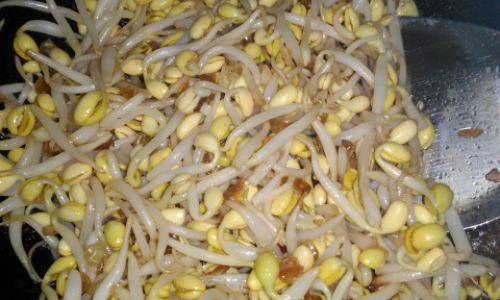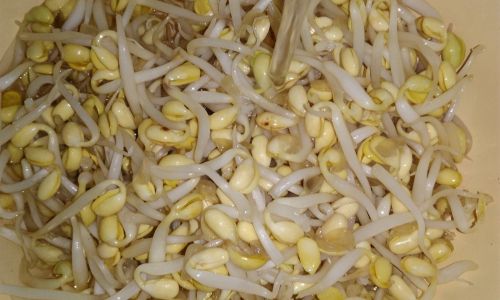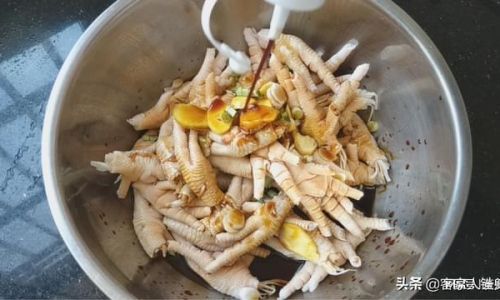Soybean sprouts, often overlooked in Western cuisine, hold a revered place in Asian kitchens. Their crisp texture, mild nutty flavor, and remarkable versatility make them a staple in dishes ranging from soups and salads to stir-fries. Among these preparations, stir-fried soybean sprouts (known as pao chao huang dou ya in Mandarin) stand out as a testament to the beauty of simplicity. This dish, rooted in tradition yet adaptable to modern tastes, celebrates the harmony of umami-rich seasonings and the sprouts’ natural freshness. Below, we explore the history, technique, and cultural significance of this humble yet profound dish.

A Brief History of Soybean Sprouts
Soybean sprouts have been cultivated for centuries across East Asia, with records dating back to ancient China. Their popularity stems from their affordability, nutritional density, and ability to thrive in various climates. Unlike mung bean sprouts, which are prized for their delicate crunch, soybean sprouts offer a heartier bite and a subtle earthiness. In Korean cuisine, they are a key ingredient in bibimbap, while in Japanese households, they often appear in ohitashi (blanched greens with soy sauce). However, it is in Chinese cooking that stir-fried soybean sprouts truly shine—a dish that transforms a simple ingredient into a symphony of textures and flavors.
The Philosophy Behind Stir-Frying
Stir-frying, or chao in Mandarin, is more than a cooking method; it is a culinary art form. Rooted in the principles of wok hei (the breath of the wok), this technique emphasizes high heat, rapid movement, and precise timing. The goal is to seal in the ingredients’ natural flavors and textures while infusing them with the smoky essence of the wok. Soybean sprouts, with their high water content and delicate structure, require a delicate balance: cooking them just enough to soften their crunch without reducing them to mush.
Key Ingredients and Their Roles
- Soybean Sprouts: Freshness is paramount. Look for sprouts with firm, white stems and vibrant green leaves. Avoid those with wilted leaves or a slimy texture, as these indicate spoilage.
- Aromatics: Garlic, ginger, and dried chili peppers form the flavor backbone. Garlic adds pungency, ginger a subtle warmth, and chili peppers a gentle heat.
- Seasonings: Light soy sauce provides saltiness and umami, while a touch of dark soy sauce deepens the color. Optional additions like oyster sauce or fermented black beans can elevate complexity.
- Oil: A neutral oil with a high smoke point, such as peanut or vegetable oil, ensures even cooking without burning.
- Garnishes: Finely chopped scallions, sesame seeds, or a drizzle of chili oil add visual appeal and layers of flavor.
The Cooking Process: Step by Step
-
Preparation:
- Rinse the soybean sprouts under cold water to remove dirt. Drain thoroughly and pat dry with a clean kitchen towel. Excess moisture will steam the sprouts instead of stir-frying them, resulting in a soggy texture.
- Mince garlic and ginger, and slice dried chilies into thin rounds.
-
Wok Preparation:
- Heat the wok over high heat until it begins to smoke. Add a tablespoon of oil and swirl to coat the surface. This step, known as seasoning the wok, prevents sticking and ensures even heat distribution.
-
Stir-Frying:
- Add the aromatics to the wok and stir-fry for 10–15 seconds until fragrant. Be cautious not to burn the garlic, as this will impart bitterness.
- Toss in the soybean sprouts and stir vigorously to coat them in oil. The high heat will cause the sprouts to sizzle and release moisture, creating a light, aromatic steam.
- Drizzle in the soy sauces and continue stirring. The sprouts will wilt slightly but retain their crunch. This process should take no more than 2–3 minutes.
-
Finishing Touches:
Remove the wok from heat and fold in the garnishes. A sprinkle of white pepper or a squeeze of lime juice can brighten the dish.

Cultural Significance
In China, stir-fried soybean sprouts are more than a meal—they are a symbol of resilience and resourcefulness. During times of scarcity, this dish sustained generations with its nutritional heft and minimal cost. Today, it remains a beloved home-cooked staple, often served alongside steamed rice or noodles. In some regions, it is even enjoyed during Lunar New Year celebrations, symbolizing growth and prosperity.
Health Benefits
Soybean sprouts are a nutritional powerhouse. Rich in vitamin C, folate, and iron, they support immune function and cellular repair. Their high fiber content aids digestion, while their low calorie count makes them ideal for weight management. Stir-frying preserves these nutrients better than boiling, as the quick cooking time minimizes nutrient loss.
Variations and Regional Adaptations
While the classic recipe is beloved, regional variations abound:
- Sichuan Style: Adds doubanjiang (fermented chili bean paste) and Sichuan peppercorns for a numbing, spicy kick.
- Cantonese Style: Incorporates dried shrimp or Chinese sausage for umami depth.
- Vegetarian Twist: Substitutes soy sauce with mushroom-based seasonings and adds toasted cashews for texture.
Modern Interpretations
Contemporary chefs are reimagining stir-fried soybean sprouts with global influences. Some pair them with bacon for smokiness, while others toss them with sesame oil and kimchi for a fusion twist. Air-fried sprouts, crisped to perfection, have also gained popularity as a healthier alternative to deep-fried snacks.
Troubleshooting Common Issues
- Soggy Sprouts: Ensure the wok is sufficiently heated before adding oil. Overcrowding the pan will lower the temperature and steam the sprouts.
- Bland Flavor: Amplify the seasonings gradually. Taste and adjust as you cook, as soy sauces vary in saltiness.
- Burnt Aromatics: Keep a close eye on the garlic and ginger. Remove the wok from heat if they begin to brown too quickly.
Serving Suggestions
Stir-fried soybean sprouts pair beautifully with:
- Steamed Jasmine Rice: The dish’s savory notes complement the rice’s floral aroma.
- Noodle Dishes: Toss with chow mein or lo mein for added crunch.
- Grilled Proteins: Serve alongside teriyaki salmon or ginger-scallion chicken for a balanced meal.
Conclusion
Stir-fried soybean sprouts are a testament to the magic of simplicity. With minimal ingredients and technique, they deliver a dish that is both nourishing and deeply satisfying. Whether enjoyed in a bustling Chinese night market or a quiet home kitchen, this humble preparation reminds us that true culinary artistry lies not in complexity, but in the ability to elevate the ordinary into the extraordinary. So next time you spot a bunch of soybean sprouts, remember: within their unassuming form lies a world of flavor waiting to be unleashed.





0 comments